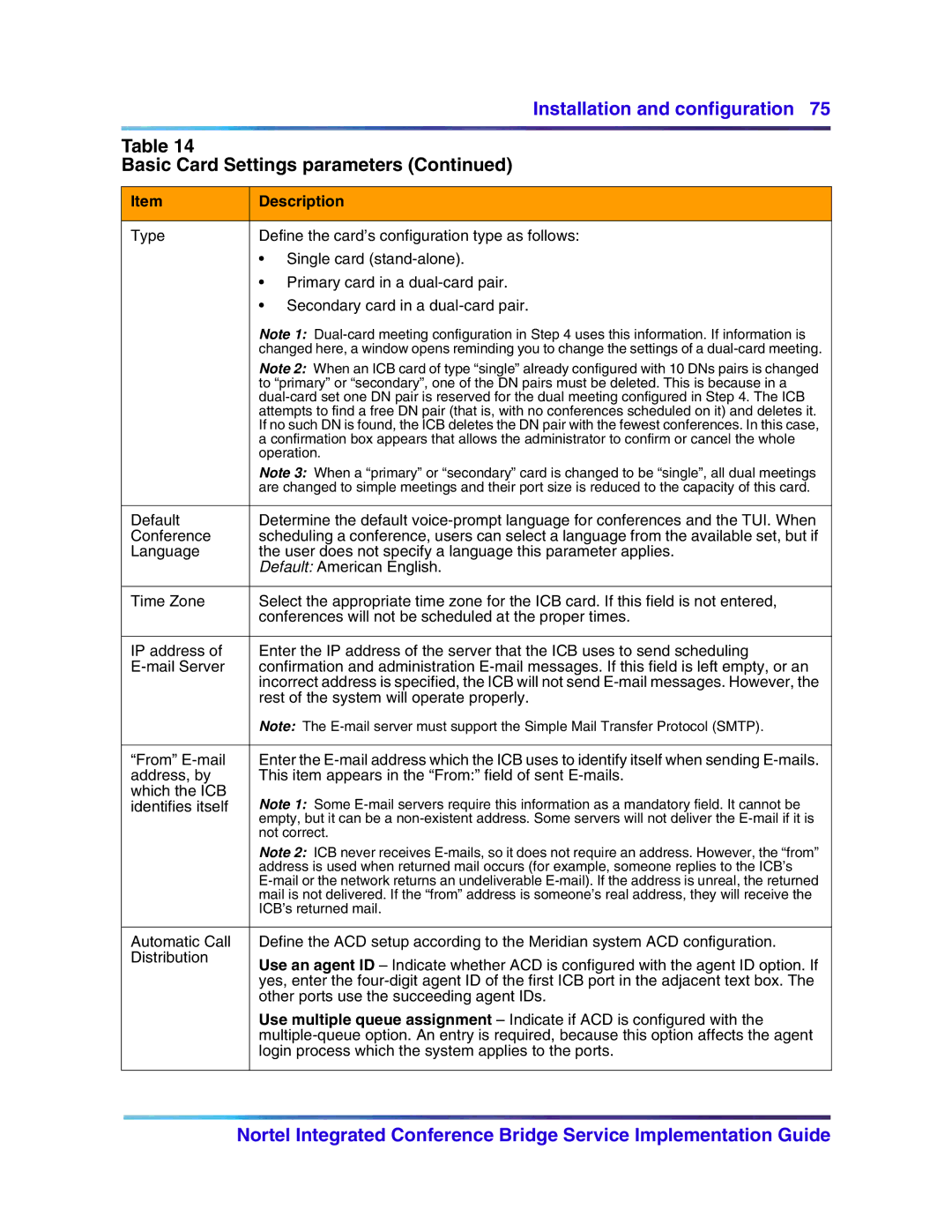
Installation and configuration 75
Table 14
Basic Card Settings parameters (Continued)
Item | Description |
|
|
Type | Define the card’s configuration type as follows: |
| • Single card |
| • Primary card in a |
| • Secondary card in a |
| Note 1: |
| changed here, a window opens reminding you to change the settings of a |
| Note 2: When an ICB card of type “single” already configured with 10 DNs pairs is changed |
| to “primary” or “secondary”, one of the DN pairs must be deleted. This is because in a |
| |
| attempts to find a free DN pair (that is, with no conferences scheduled on it) and deletes it. |
| If no such DN is found, the ICB deletes the DN pair with the fewest conferences. In this case, |
| a confirmation box appears that allows the administrator to confirm or cancel the whole |
| operation. |
| Note 3: When a “primary” or “secondary” card is changed to be “single”, all dual meetings |
| are changed to simple meetings and their port size is reduced to the capacity of this card. |
|
|
Default | Determine the default |
Conference | scheduling a conference, users can select a language from the available set, but if |
Language | the user does not specify a language this parameter applies. |
| Default: American English. |
|
|
Time Zone | Select the appropriate time zone for the ICB card. If this field is not entered, |
| conferences will not be scheduled at the proper times. |
|
|
IP address of | Enter the IP address of the server that the ICB uses to send scheduling |
confirmation and administration | |
| incorrect address is specified, the ICB will not send |
| rest of the system will operate properly. |
| Note: The |
|
|
“From” | Enter the |
address, by | This item appears in the “From:” field of sent |
which the ICB | Note 1: Some |
identifies itself | |
| empty, but it can be a |
| not correct. |
| Note 2: ICB never receives |
| address is used when returned mail occurs (for example, someone replies to the ICB’s |
| |
| mail is not delivered. If the “from” address is someone’s real address, they will receive the |
| ICB’s returned mail. |
|
|
Automatic Call | Define the ACD setup according to the Meridian system ACD configuration. |
Distribution | Use an agent ID – Indicate whether ACD is configured with the agent ID option. If |
| |
| yes, enter the |
| other ports use the succeeding agent IDs. |
| Use multiple queue assignment – Indicate if ACD is configured with the |
| |
| login process which the system applies to the ports. |
|
|
Nortel Integrated Conference Bridge Service Implementation Guide
